#429ci V8
Explore tagged Tumblr posts
Text



Ford Torino GT Cobra-Jet 429, 1970. The performance model of the second generation Torino range was only available with the "SportsRoof." It came standard with a 4-speed close ratio transmission, Hurst shifter, competition suspension, flat black hood and grille and the Ram Air 370 hp 429ci V8
#Ford#Ford Torino#Ford Torino GT Cobra-Jet 429#second generation#1980#Cobra-Jet#429ci V8#SportsRoof#pillarless hardtop#hardtop coupe#1970s
257 notes
·
View notes
Text

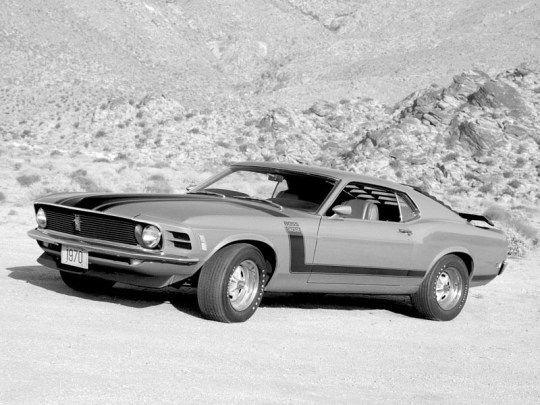
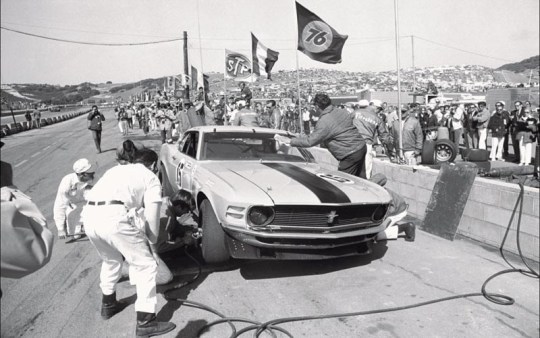
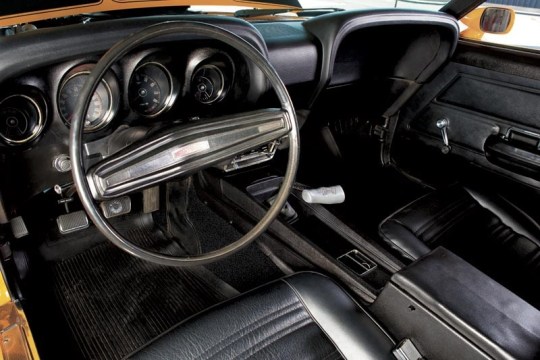
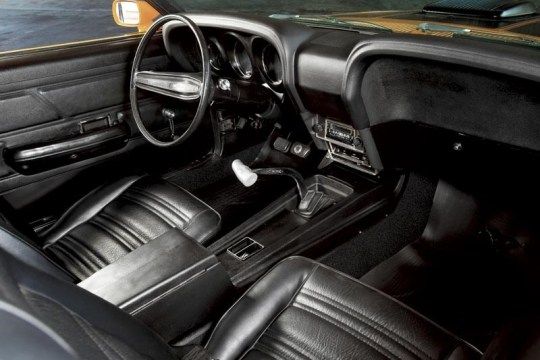
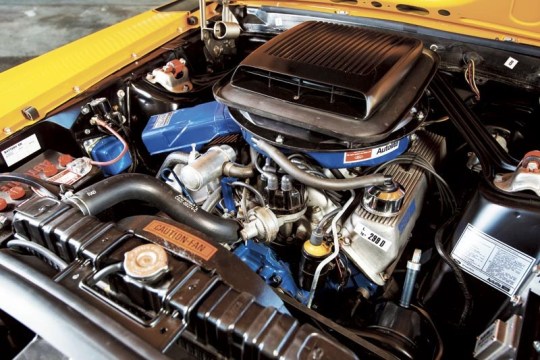


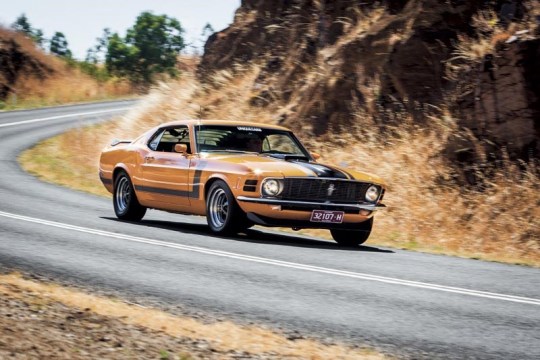
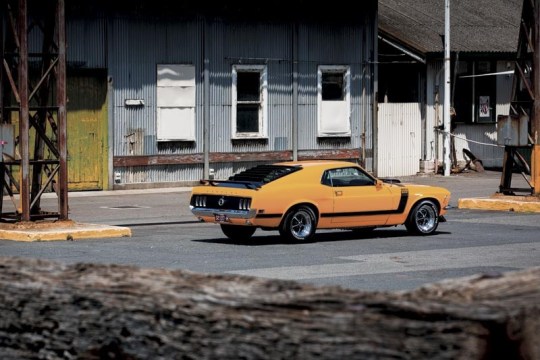
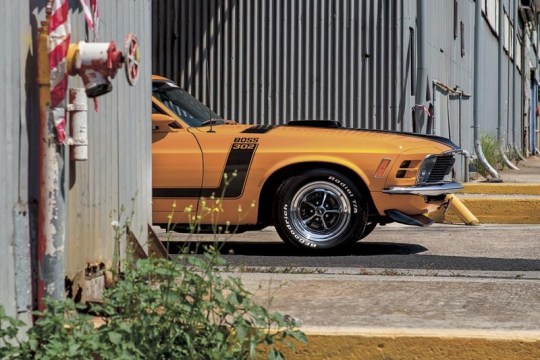
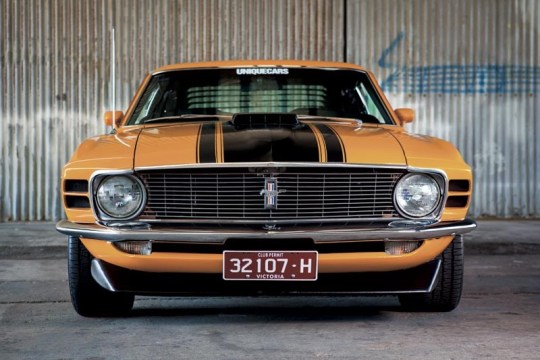
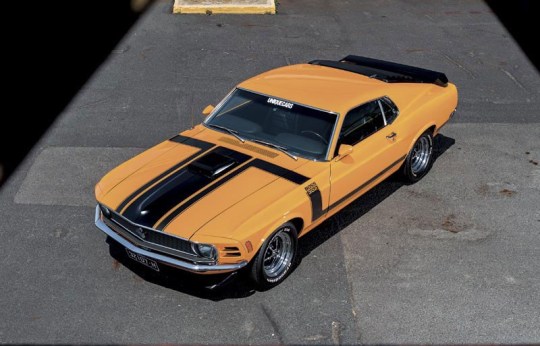
FORD MUSTANG BOSS 302
BOSS-A-NOVA!
They called it The Boss and for two short years it ruled the muscle car scene in the US, establishing itself as one of the greatest road and race cars of the era. Now, it’s one of the most collectible.
In 1960s US street lingo, if something was ‘boss’ it was cool, tough, the best. And the 1969 Boss 302 Mustang wore its badge with pride. It launched just four and a half years after the first Mustang was revealed to critical acclaim and record sales. Yearly updates to keep Mustang fresh in the face of tough new challengers from General Motors and Chrysler (particularly the Camaro) resulted in the once lean and pretty ’Stang muscling up, both in body shape and under-bonnet brawn, and the 1969-70 Boss models were the zenith of Mustang styling.
Thereafter, Mustangs became increasingly bloated and anaemic as the 1970s fuel crisis and stricter pollution laws cut horsepower and stylists lost their way; the rippling flanks and thrusting nose of the late 60s/early 70s cars gave way to boxy, bland designs. That early look would not be recaptured until 2005, when new Mustangs were given retro styling.
The Boss 302 was launched at the same time as its big-block brother, the Boss 429. Both were positioned as competition specials; Ford wanted to homologate its 302-cuber for Trans-Am and the 429ci monster for NASCAR. In fact, Ford went wild with engines between 1969-70, offering nine V8s – the ‘economy’ 302, 351 Windsor, 351 Cleveland, 390, 428 Cobra Jet, 428 Super Cobra Jet, 429 ‘wedge’, Boss 302 and Boss 429.
For the Boss 302, Ford’s high-compression 302ci small-block V8 was beefed up with four-bolt main bearing caps and redesigned ‘Cleveland’ cylinder heads with bigger inlet and exhaust valves, and ports that allowed the engine to breathe more efficiently.
These ‘semi-hemi’ heads were based on the Ford 427ci racing engine’s combustion chambers, and a balanced forged steel crankshaft and forged steel conrods allowed the engine to handle high rpms for sustained periods. A single 780cfm four-barrel Holley carburettor sat atop a high-rise aluminium inlet manifold, while a dual-point distributor, high-pressure oil pump, windage tray and screw-in welch plugs were further indications of its competition intent.
A rev limiter was fitted, progressively cutting spark from 5800rpm to 6150, but it was easily bypassed and the Boss 302 could reportedly keep making power up to 8000rpm with minor mods. In the muscle car marketing war, Ford claimed a peak horsepower figure of 290bhp at 5800rpm (the same as the Camaro Z/28), but that was extremely conservative.
Two four-speed manual Top Loader transmissions were available: a wide-ratio ’box with Hurst shifter more suited to street and strip use, and a close-ratio unit for racing. Adding to the race or road options list were four diffs: the stock 3.5:1 nine-inch, Traction-Lok 3.5:1 and 3.91:1 and the No-Spin 4.30:1 built by Detroit Automotive. Axles and diff centres were also strengthened to take the loads.
Suspension was also race-inspired with heavy-duty springs, shocks and sway bar up front, and Hotchkiss-style rear suspension with heavy-duty leaf springs, sway bar and staggered shock absorbers. The left-hand shock absorber was bolted behind the axle and the right in front, to reduce axle tramp under acceleration. Amazingly for such a high-performance car, braking was still only discs and drums with power assistance.
Ironically, the Boss 302’s sexy shape was styled by former General Motors designer Larry Shinoda, who is often credited with coming up with the Boss moniker. When asked what he was working on, he replied, "The boss’s car", a reference to new Ford president ‘Bunkie�� Knudson, who was also ex-GM and had recruited Shinoda to Ford.
While the wheelbase remained unchanged at 2740mm, the ’69 Mustang was 96.5mm longer overall to accommodate all the V8s offered, although the big-blocks still had to be shoe-horned under the bonnet. Shinoda’s ’69 Boss 302 was also one of the first production cars to offer an optional front air dam and adjustable rear wing, and his use of high-contrast black panels, rear window SportsSlats, and go-faster stripes made the Boss a real attention-grabber. The ’69 was also the only quad-headlight Mustang, a feature that was dropped for 1970 models.
In 1970, American Hot Rod magazine dubbed the 1970 Boss 302 as "definitely the best handling car Ford has ever built", while the conservative Consumer Guide called it "uncomfortable at any speed over anything but the smoothest surface". Unique Cars resident Mustang maniac, ‘Uncle’ Phil Walker, never read the Consumer Guide review, but even if he had it wouldn’t have stopped him buying the immaculate 1970 Grabber Orange Boss 302 you see here.
Phil already has his beloved 1966 Shelby GT350H, but the Boss 302 really got his Mustang juices percolating. And he wasn’t alone, because the first Boss he saw, some 43 years ago, is still one of Australia’s most iconic race cars: Allan Moffat’s Trans-Am racer. Phil remembers it clearly.
"I saw Moff race it Calder and I was inspired to own one," Phil recalls. "It was the most aggressive-looking car; its stance was something you had to see to believe. It looked like it was doing a million miles per hour when it was parked.
"My Boss was originally a one-owner car and I bought it from a friend of mine in California, Dave, who I also bought my Shelby GT350H from 19 years ago. Dave found it in a barn with a blown engine, but in otherwise pretty good condition.
"The lady who owned it from new didn’t realise it had a high-compression engine and had run it on standard fuel. When it blew up she just parked it.
"Dave did a nut-and-bolt restoration over two years, then put it up on his hoist. He didn’t want to sell it, but I got my way in the end – unfortunately he had the last say on the price (laughs). I didn’t even bother to test drive it; I knew it was a good car. It had 21 (new) miles on the odo when I picked it up and only 54,000 miles in total."
Since then, Phil has only put a couple of hundred miles on the car, but that’s enough for him to have bonded with it.
"I’ve only had the Boss since January and it’s growing on me. It’s different to the Shelby. It’s bigger and very low.
"The engine is incredible. Dave is one of the best engine builders in California and when he rebuilt the 302 he changed the cam spec. US camshaft technology was okay in the 60s and 70s, but if you had a big-cam muscle car they wouldn’t idle and they were terrible for driving in cities.
"A proper Boss engine can rev to 8500rpm all day and for a V8 that’s pretty serious. But they’re not renowned for low-down torque; it starts coming on from 3500rpm. My car still has a solid-lifter cam, but it pulls like a train from 1200rpm in top gear and I can drive it around at 1500rpm in top all day.
"It’s got the four-speed close-ratio Top Loader with the long first gear and with a 3.7:1 rear end it does about 55-60mph (89-97km/h) in first gear. It bloody goes!"
Phil is a fussy bugger and his cars have to look just right, so Russell Stuckey from Stuckey Tyres has ordered him a set of genuine 15 x 8 Minilites from England to replace the standard Magnum 500s.
"I want it to look like the Parnelli Jones race car, and to get the stance I want it’s going to have 275/60s on the rear and 255/60s on the front. At the moment it’s a pretty car that is tough, but I want a tough car that looks tough. And that’s all I’m going to do to it."
After his first real fang in the Boss, Phil felt that his Shelby would be half a lap in front at the end of a 10-lap sprint at Sandown, but now thinks the Boss would be quicker. We might have to put both to the acid test one day. What do you mean "no way", Phil?
It was a nervous Phil who turned up at a Melbourne storage facility in January to pick up his new Boss 302. So nervous, in fact, that he took along Unique Cars art director Ange and a sturdy tow rope – just in case.
The storage people were even more apprehensive – they had been warned about just how anal he is with his cars, as he explains: "The lady there said, ‘You must be pretty fanatical because we’ve been given strict instructions that no one is to touch the car except you’." Fortunately, the car arrived in pristine condition.
"I was pretty excited, I’d been waiting for seven weeks," Phil laughs. "I took the car cover off it, fired it up, and it drove home like a brand new car. It was as good as I thought it would be. I spent the next three hours washing it."
Sounds like our Phil.
PARNELLI AND ME
Three years ago, my mate Dave and I were invited to a Trans-Am dinner at Portland International Raceway where Dave was racing his 1970 Trans-Am Boss 302 and I was crewing for him.
When we were driving there we noticed this black Mercedes following us. When we stopped it did too and this bloke got out and said, "I noticed you guys back at the hotel. You’re going to the Trans-Am dinner aren’t you? I’m lost." It was Parnelli Jones!
I jumped in with him and when we got there I ‘invited’ myself onto Parnelli’s table, which also included Pete Brock – the guy who designed the Shelby Daytona Coupe. There was I, Mr Nobody, with all these US racing heavies, but Parnelli was a real gentleman, not up himself in any way.
The next day they had free lap time at Portland and, when I saw Parnelli there with Ford’s new ‘Parnelli Jones’ Boss 302 tribute Mustang, I asked if there was any chance of a ride and he said jump in. We did 10 laps and the guy hadn’t lost any of his ability; my eyes were getting bigger and bigger coming into the corners.
It was a great experience that I’ll never forget. – PW
IT's MINE...
Moff’s Mustang is probably the most iconic Australian racecar and after seeing it I was inspired to own a Boss Mustang. Then, about 25 years ago, I went to Pebble Beach in Monterey for the first time and saw a 1970 Grabber Orange Boss 302, which was the colour Parnelli Jones raced in Trans-Am. That day I knew I had to own a Boss. It was the car I’d always wanted after my Shelby, which was my lifelong dream car.
My Boss 302 is fully optioned, including the Shaker, extra side mirror, tacho and rear louvres, and it’s got a lot of wow factor. When you drive down the freeway, you get the thumbs-up from all sorts of different people. I think it’s the colour.
It’s closer to show standard than my Shelby. It’s got the paint marks on the tailshaft and all the little concours details, but I’m never going to show it; I’m not into that.
The 1969/70 body shape is still the best. Ford got it right then, but lost the plot after that and it’s reflected in their collectibility today. – PW
#car#cars#muscle car#american muscle#ford#FORD MUSTANG BOSS 302#ford mustang#boss 302#MUSTANG BOSS 302#mustang
163 notes
·
View notes
Photo
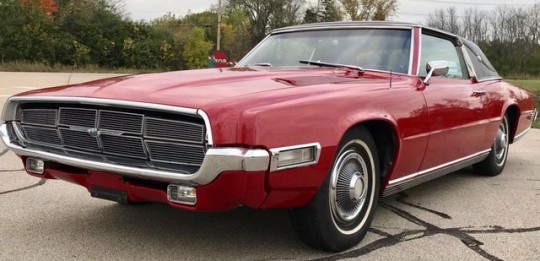
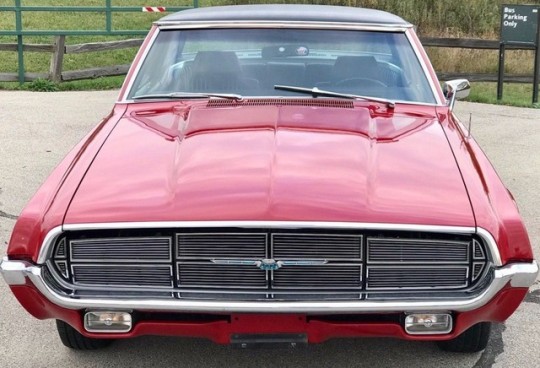


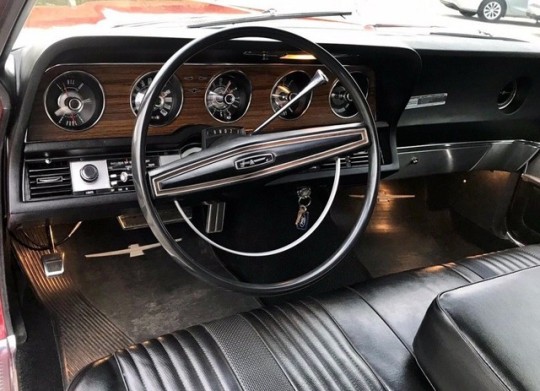
I kinda’ like the big mouth ‘birds, like this ‘69. They have tons of character.
131 notes
·
View notes
Photo
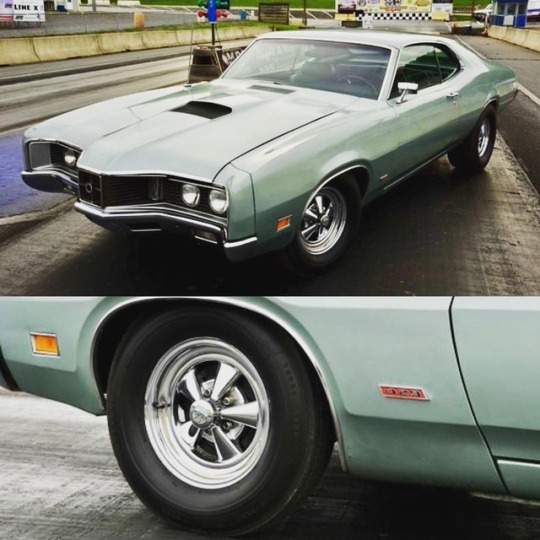
1970 Mercury Cyclone 429 SCJ Facts⤵️⤵️⤵️⤵️⤵️⤵️⤵️⤵️ Engine: 429ci/375hp Super Cobra Jet V-8 with Ram Air Transmission: Ford Top Loader 4-speed manual Rearend: Ford 9-inch with 4.30 gears and Detroit Locker Interior: Black vinyl bench seat Wheels: 15×4 front, 15×8 rear Cragar SS Tires: 8.25-15 Concorde Turbo Speed front, P275/60R15 M&H rear Special parts: 1970 Lincoln Continental Code L Light Gray Metallic paint, Lakewood traction bars, Sun tach ⚙️⚙️⚙️⚙️⚙️⚙️⚙️⚙️⚙️⚙️⚙️ #v8 #mercury #cougar #cyclone #super #cobra #jet #ford #mustang #torino #shelby #drag #race #hotrod #musclecar #classiccar #vintage #fast #unrestored #original https://www.instagram.com/p/Bozr8fan_Wy/?utm_source=ig_tumblr_share&igshid=18rgfykuq4ha5
#v8#mercury#cougar#cyclone#super#cobra#jet#ford#mustang#torino#shelby#drag#race#hotrod#musclecar#classiccar#vintage#fast#unrestored#original
162 notes
·
View notes
Text

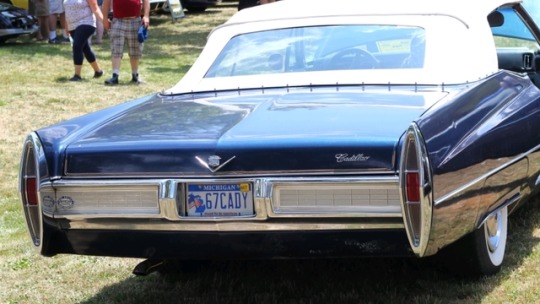

1967 Cadillac DeVille w/429ci Big Block V8
3 notes
·
View notes
Photo
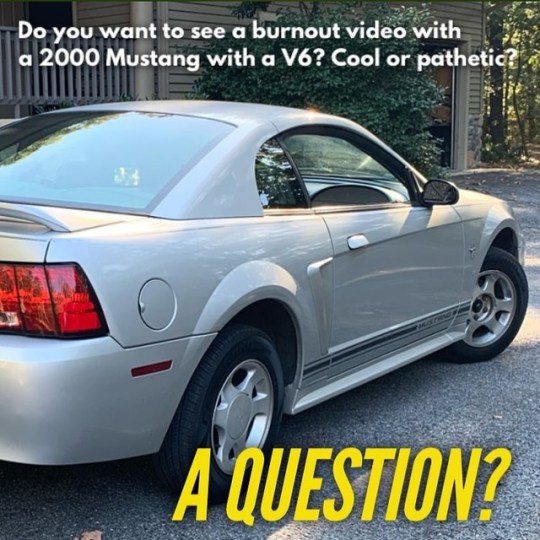
When I was driving my 429ci 71 Mustang Fastback I thought it was funny to see six cylinders doing burnouts because I knew they could be better. My quote was “I could of had a V8”. What do you think? MustangMedic wants to know. 👊😎🇺🇸 #ford #fordmustang #fordmustangmedic #mustangmedic #mustangmedics #mustangmedicranch #williamwieting #warnerbrothers #paramountstudios #sonypictures #20thcenturyfox #3ballproductions #youtube #eastwood #instagram #mustanglife #abcentertainmentgroup #blessed #oneluckyguy #drakeautogroup #chrisfix #doyoufollow #fordmustangclub @stangmagazine #bbcworldwide @classicstangz #lionsgateentertainment (at United States) https://www.instagram.com/p/B2_ktEpll2l/?igshid=17o2snrid09ia
#ford#fordmustang#fordmustangmedic#mustangmedic#mustangmedics#mustangmedicranch#williamwieting#warnerbrothers#paramountstudios#sonypictures#20thcenturyfox#3ballproductions#youtube#eastwood#instagram#mustanglife#abcentertainmentgroup#blessed#oneluckyguy#drakeautogroup#chrisfix#doyoufollow#fordmustangclub#bbcworldwide#lionsgateentertainment
0 notes
Text
Prijedorčanin pet godina uživa u vožnji Cadillac-a iz 1966
U originalnom prostoru, 429ci V8 pričvršćen je 3-stepeni turbo Hydramatic mjenjač Cadillac-a DeVille Convertible iz 1966. godine.
Umirujuća vanjska strana, lijepi kromirani i sjajni vanjski dio, i originalni kožni automobil u unutrašnjosti s mnoštvom praktičnih opcija i elektronike koja je u to vrijeme bila pojam…
Pogledajte video:
View On WordPress
0 notes
Text
1962 Ford Thunderbird - $20,895.00
1962 FORD THUNDERBIRD COUPE, 429CI V8, C6 AUTO, A/C, KELSEY HAYES W/ COKER TIRES Here is a very nice 1962 Ford Thunderbird in great condition inside and out. This beautiful bird is an absolutely solid and very original car with what we believe to be 51,000 original miles as stated by the Arizona title. Another reason we believe this is a low mileage car is the mostly original interior condition and unworn brake pedal pad as well as all chrome and mostly original paint are both are in exceptionally good unmolested condition. The car is completely solid and I could not find a single spot of rust on this car. The region code on the build sheet will back up this claim since it shows DSO 72 as the original delivery region which is San Jose, CA. Buy now and don't miss out on your chance to own a solid, well preserved West Coast Thunderbird. The list of some of the equipment: -Big Block Solid Lifter 429ci V8 -Upgraded 3spd C6 Transmission -Power Steering -Power Brakes -Power Windows and Vents -Upgraded AM/FM CD Sat Radio -Swing Away Steering Wheel -Coker Radial White Walls -Fender Skirts -Beautiful Original Kelsey Hayes Wire Wheels -Factory A/C Car w/ New Compressor The exterior on the car is in great condition and is solid as a rock. The paint almost all original around the car with just a few small touch up blends and the lower front valance re-painted to touch up many years of rock chips. The Bird was just color sanded and buffed and brightened up to a nice shine and luster and gets looks good, and gets thumbs up from everybody as it goes down the road. The chrome is original and in awesome condition with no pitting and only minor scratching and a few dings. All glass and rubber seals are in good shape and the windshield is crack free. The car is riding on 15' period correct Coker radial whitewalls with factory Kelsey Hayes wire wheels. The interior is in great shape all around for being mostly original. from Cardaddy.com https://www.cardaddy.com/vehicles/vehicle/1962-ford-thunderbird-cadillac-michigan-19721850
0 notes
Photo

New Post has been published on http://fastmusclecar.com/best-muscle-cars/1969-ford-mustang-boss-429-kk1213-2-of-5/
1969 Ford Mustang Boss 429 KK1213, 2 Of 5
VIN: 9F02Z150388 Engine: 429ci. V8 Transmission: Manual Exterior Color: White Interior Color: Black Mileage: 871 Price: $499,995.00
BUY NOW ON EBAY.
This listing is for an ultra-rare 1969 Ford Mustang Boss 429 KK1213, 2 Of 5 pre-production vehicles built by Kar Kraft in Brighton, Michigan. Originally in raven black, it started life when Dave Lyall, a dynamometer test technician for Ford, was asked at Ford Proving Grounds in Dearborn, if this car could compete in NHRA Super Stock racing. Being a preproduction car it couldn’t be sold, so Lyall and Wayne Gapp (of Gapp & Roush) reworked the car and with sponsorship from Custom Speed Enterprises, raced in Pro Stock.
The Original car as it rolled out of Kar Kraft was a black Boss 429, but it’s taken as the ‘correct’ version of this car as Dave Lyall built the vehicle for Ford’s ‘Total Performance’ racing campaign as it is now. There were earlier serial numbers starting ‘KK1201’ as prototypes or Pilot Line but they were scrapped by Ford. So, KK1213 is the earliest Boss 429 known to exist.
The car is clearly in concours condition, having won awards at the Muscle car & Corvette nationals. With this type of asking price and history the car has plenty of documentation that comes and thorough research to back up its authenticity. It’s clearly going to be of historical interest, especially to Mustang fans and with this hefty pricetag is more than likely going to end up in the hands of a museum or wealthy private collector.
Either way, a fantastic example of the Boss 429 in remarkable condition.
BUY NOW ON EBAY.
More Muscle Cars For Sale – http://fastmusclecar.com/muscle-car-for-sale/
0 notes
Text



Ford XL GT Convertible, 1969. Derived from the Galaxy, the XL was powered by a 429ci (7.0 litre) "ThunderJet" V8. The XL only survived for one more year and was discontinued after 1970
#Ford#Ford XL#Ford XL GT#Ford XL GT Convertible#1969#convertible#Thunder Jet V8#429ci V8#open roof#Ford Galaxy
146 notes
·
View notes
Photo

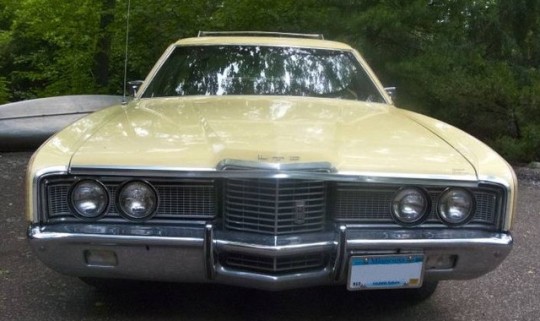


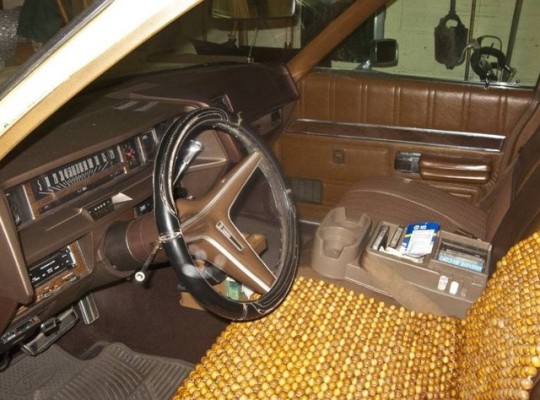
How’s this for a people hauler? A 10 passenger 1972 Ford Country Sedan station wagon with everything, including that wonderful wooden beaded seat cover. Let’s get on the road!
75 notes
·
View notes
Text
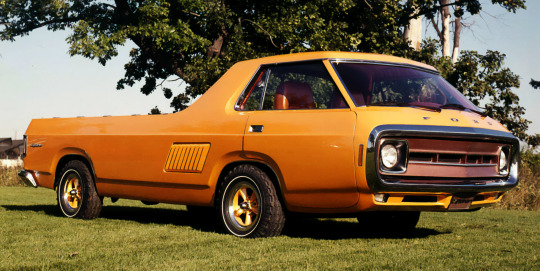
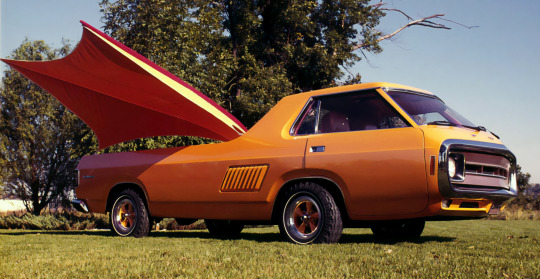
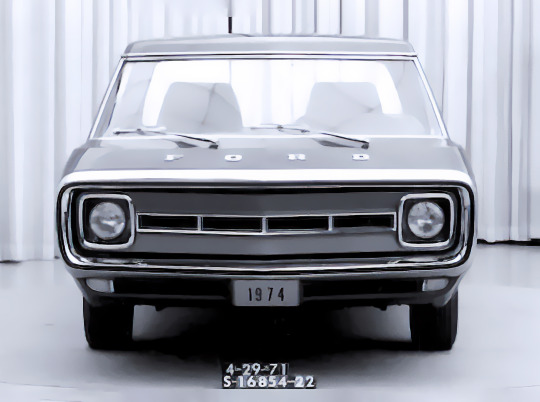



Ford Explorer SUV Concept, 1973. A forward-control pick-up concept that was shown at the Chicago Auto Show in 1973 (studio shots are dated 1971 with the vehicle's license plates indicating it was a proposal for the 1974 MY). The design copied the Dodge Deora custom truck from 1967. Ford had made forward-control pick-ups in the 1960s so it's not out of the question that the Explorer was considered for series production. The concept featured a canopy that could be deployed from the rear deck. It was powered by a mid-mounted 429ci V8 but went no further than a single prototype
#Ford#Ford Explorer SUV#concept#prototype#forward control#design study#concept pick-up#1970s#Chicago Auto Show#one-off#mid-engine#429ci V8
1K notes
·
View notes
Text




Ford Falcon 429 Super Cobra Jet 2-door Sedan, 1970 1/2. This was the last generation for the US Falcon and only existed for 6 months as the new entry level to Ford's intermediate range. Only 90 Cobra Jet 2-door Sedans left the factory. For 1971 the Falcon model name was dropped and the Torino nameplate was used across Ford's entire intermediate model line
#Ford#Ford Falcon#Ford Falcon 429 Super Cobra Jet#Cobra Jet#last of the line#2 door#1970#1970 1/2#intermediate#429ci V8#muscle car#high performance#US market
492 notes
·
View notes
Text
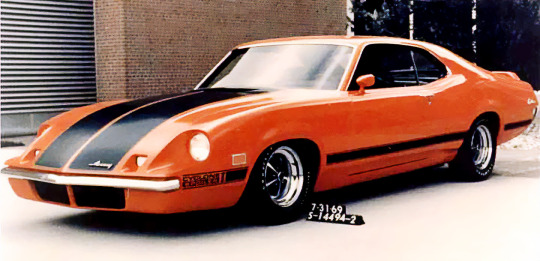
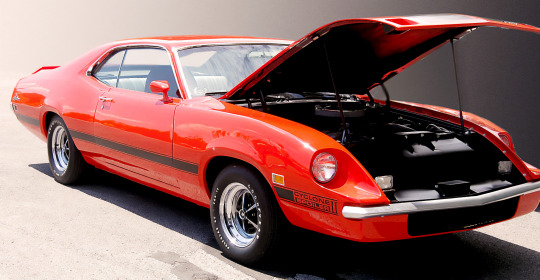
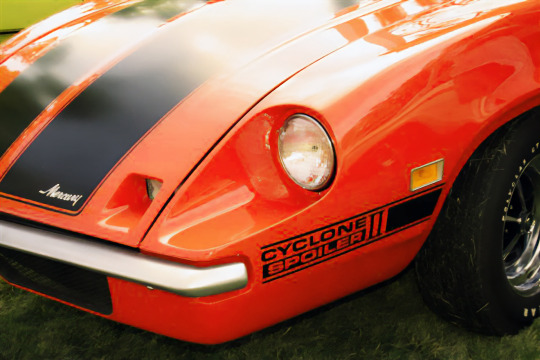



Mercury Cyclone Spoiler II prototype, 1970. Powered by the Boss 429 V8, the Cyclone Spoiler II was to take part in the NASCAR series and was closely related to Ford King Cobra. However Ford withdrew from racing after 1969 and NASCAR effectively banned the "aero cars" so despite their racing success in 1969 the Cyclone Spoiler II program was cancelled
#Mercury#Mercury Cyclone Spoiler II#prototype#1970#aerodynamic#drop snot#429ci V8#NASCAR#end of the line#aero car#muscle car#dead brands
669 notes
·
View notes
Text


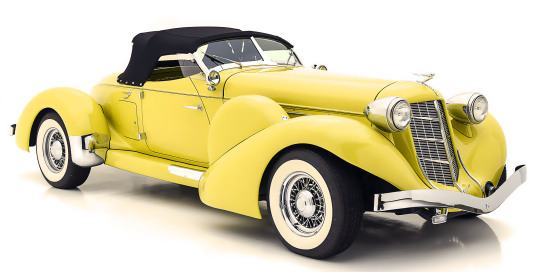
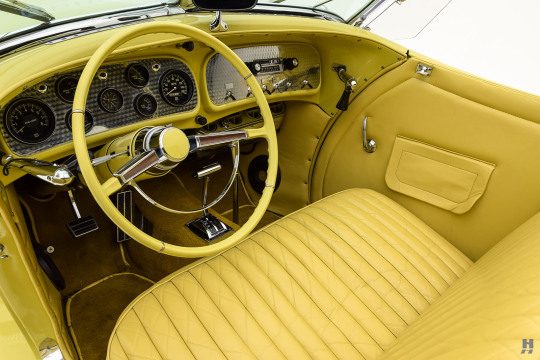
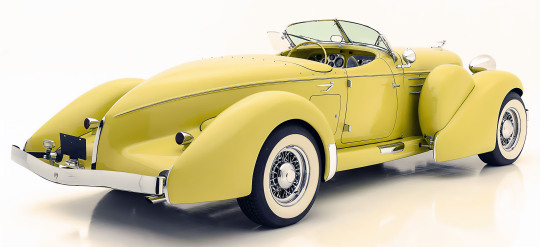
Auburn 866 Speedster, 1976. Glenn Pray was a passionate Auburn-Cord-Duesenberg enthusiast and also foremost dealer in Auburn and Cord parts. In the 1970s Pray developed a “continuation” series of Boattail Speedsters with precision fibreglass bodies and contemporary Ford 429ci V8 engines, along with coil-sprung independent front suspension, front disc brakes and automatic transmission.
#Auburn#Auburn 866 Speedster#Boattail Speedster#1930s style#continuation series#replica#fibreglass#Ford 429ci V8#Ford V8#Glenn Pray#1976
279 notes
·
View notes
Text
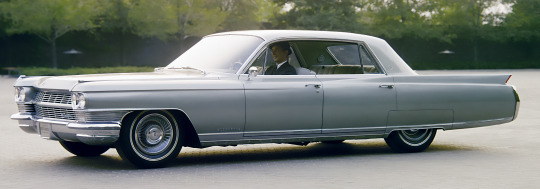
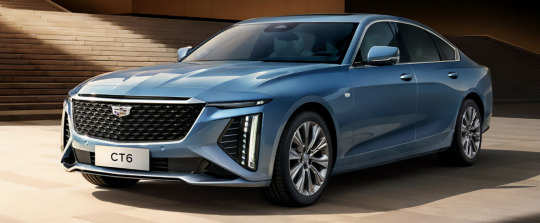


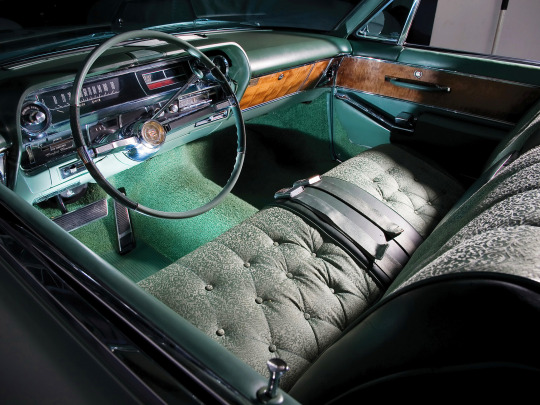
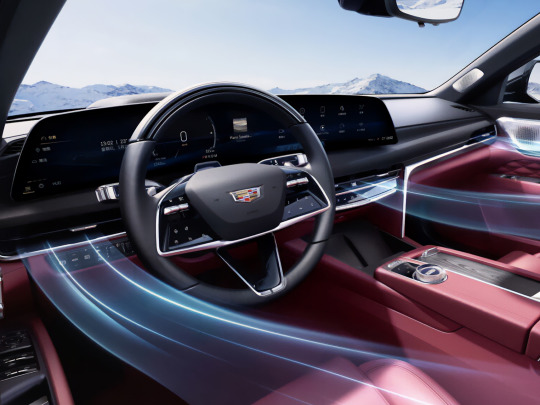
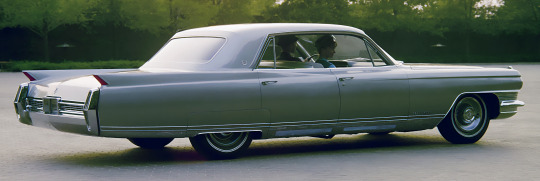
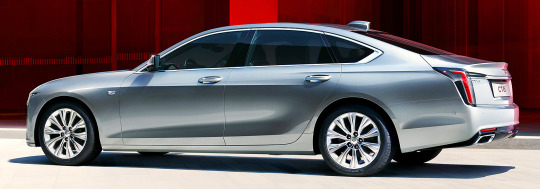
What a difference 60 years makes juxtaposition of Cadillac Fleetwood Sixty Special, 1964 & Cadillac CT6, 2024. The new generation of the CT6 (Cadillac Touring 6) has been revealed for the Chinese market (the previous generation was discontinued in the US in 2020). Whereas the Sixty Special rode on a 129.5in (3,289mm) wheelbase and was 223.5in (5,677mm) long the new CT6 sits on a 122.4in (3,109mm) wheelbase and measures 205.6in (5,223mm) in length making in Cadillac's largest saloon. The CT6 is powered by a 233hp Chinese-made 2.0 litre turbo 4 cylinder engine, whereas the Sixty Special came with a 340hp 7.0 litre (429ci) V8
#Cadillac#Cadillac Fleetwood Sixty Special#Cadillac CT6#Cadillac Sixty Special#1964#2024#new cars#new generation#What a difference#luxury car#60 years
175 notes
·
View notes